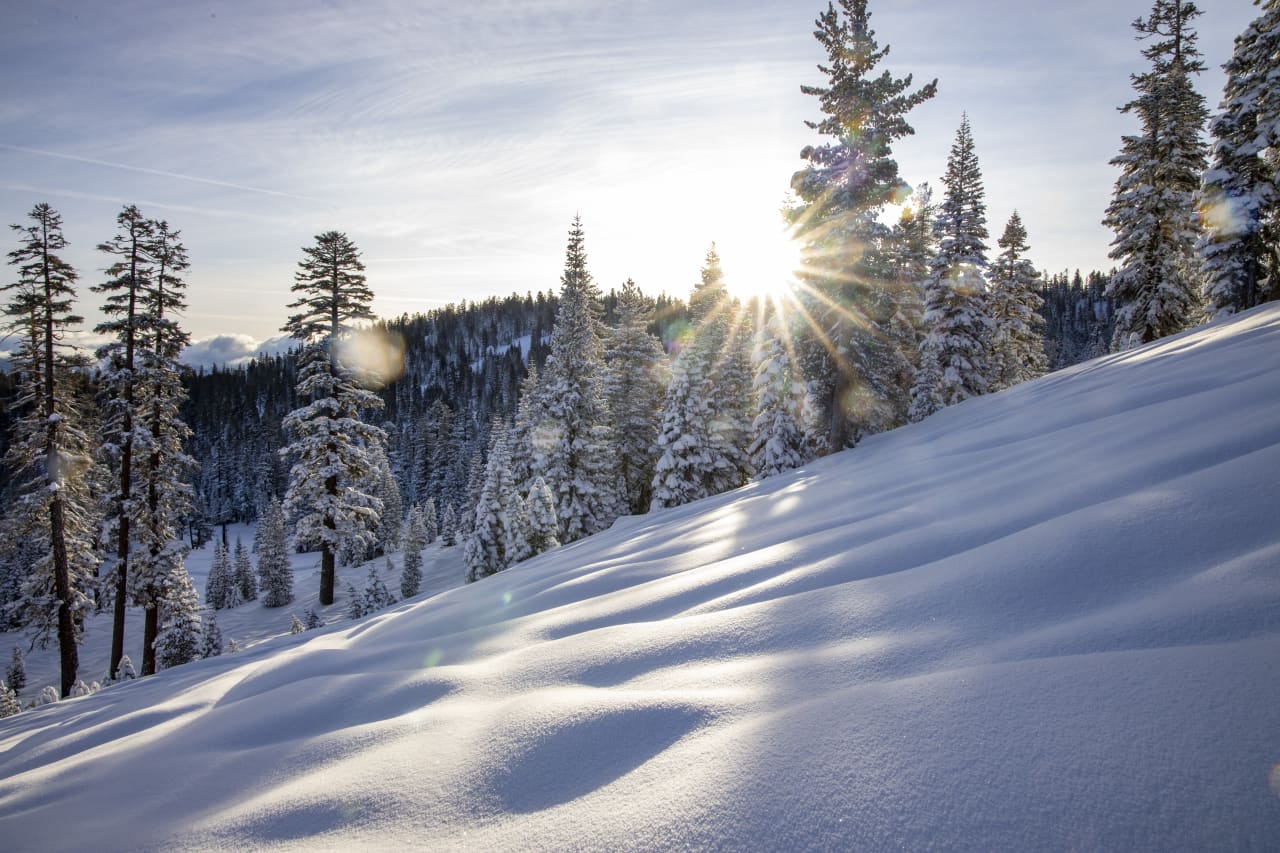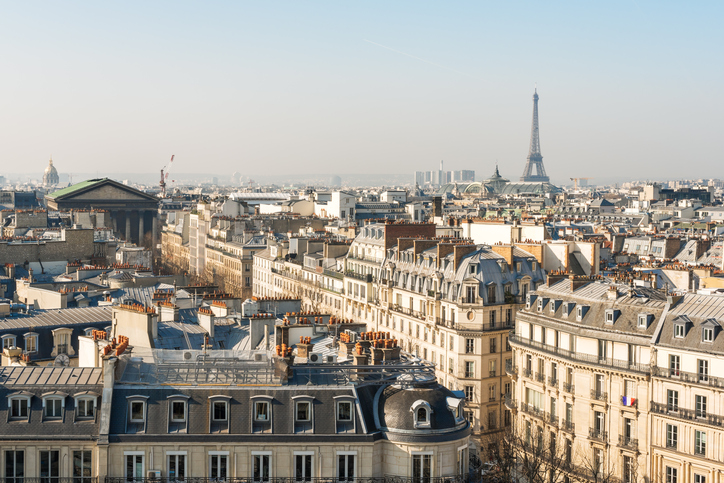Mountain Resort Vail Is Taking Its Sustainability Efforts to New Heights
One of the largest names in the ski world is taking steps to make the industry more sustainable.
“The outdoors is our business,” says Kate Wilson, vice president of environmental and social responsibility at Vail Resorts.
Vail Resorts, a mountain resort company with a network of 41 ski resorts across four countries, set out to make a major commitment to their sustainability efforts in 2017. The intent was to achieve a net-zero operating footprint by 2030. This “Commitment to Zero” includes the ambitious goal of zero net emissions, zero waste to landfill, and zero net operating impact on forests and habitat.
“On day one, we didn’t have the road maps and plans on how we were going to get there, but we’ve since built those,” Wilson says. “And we’ve brought others in the industry with us.”
Just six years later, Vail Resorts is ahead of schedule to reach its emissions goals and on track to achieve the zero net operating footprint by 2030. The company reached 100% renewable electricity for the second year and hit its 2030 energy-efficiency target early.
Offsets are another way Vail Resorts is supporting sustainability. They have reforested over 200 acres of land since 2017 and support wind farms across the country. Plum Creek is a large-scale wind farm enabled by Vail Resorts. In its 2023 fiscal year, it produced 350,177 megawatt hours of renewable electricity, equivalent to the electricity needed to power 48,286 homes for one year.
“Sustainability and the way it is integrated into our business and operationalised with every decision that we make is something I’m really proud of,” Wilson says. “We’re not just thinking about how we, as a resort, can make an impact on climate change but how we can use our voice across our resorts, our industry, and beyond.”
Commitment to Zero gives the Vail Resorts properties one central sustainability focus. With one common goal, the company can lean into and take advantage of their enterprise network.
“At every resort we’re sharing lessons learned: ‘We did this thing in Whistler, we should do it in Park City,’” Wilson says. “That’s the power of the network and coming together to say, ‘what can we do that’s bigger than each of our resorts?’”
To further that goal of sharing lessons and ideas, Vail Resorts spearheaded The Mountain Collaborative for Climate Action in 2019. Now with over 76 resorts in the collaborative, the group works together on innovative solutions to help spread sustainability across the ski industry. Vail Resorts also partners with the National Ski Areas Association on quarterly meetings to discuss items related to green initiatives and share its experiences with an even larger group.
“There are smaller resorts that don’t have sustainability resources. We can share lessons learned, come up with solutions where we tell them, for example, how we recycle our nitrile gloves and turn them into pellets that become playgrounds,” explains Wilson. “We don’t need to own these things we want to share with others so they can take action, too.”
Developing innovative solutions for recycling and reducing landfill waste is a key part of this sustainability strategy. Initiatives to collect and upcycle waste can be easily replicated at multiple resorts. A project to collect and recycle soft plastics into decking is being piloted at various properties across the Vail Resorts mountains.
Other innovative solutions Vail Resorts has implemented include the ski industry’s only gondola-based waste removal system, a custom-designed recycling center at Vail Mountain, and a resource-efficient snowmaking system.
Vail Resorts also leans on strategic partners to assist with their green efforts. The company worked with PepsiCo, their on-mountain beverage partner, to develop a program to upcycle candy and snack wrappers into furniture and terrain park features. There’s now a Mountain Dew wallride in the terrain park at Breckenridge crafted from recycled bottles and snack packaging materials.
The company also joined together with Helly Hansen to turn old ski resort work uniforms into tote bags and ski patrol backpacks. The products were sold on behalf of their EpicPromise Employee Foundation, which provides hardship and education grants to teammates.
The employee foundation is one way Vail Resorts is expanding its efforts beyond environmental initiatives. The company has a large youth access program and hosted more than 11,000 youths across 32 properties in the 2022-23 season, according to the resort.
“We really believe the future of the sport is inclusion. We care deeply about removing some of those barriers to have people try the sport for the first time,” Wilson says.
 Copyright 2020, Dow Jones & Company, Inc. All Rights Reserved Worldwide. LEARN MORE
Copyright 2020, Dow Jones & Company, Inc. All Rights Reserved Worldwide. LEARN MORE
This stylish family home combines a classic palette and finishes with a flexible floorplan
Just 55 minutes from Sydney, make this your creative getaway located in the majestic Hawkesbury region.
As Paris makes its final preparations for the Olympic games, its residents are busy with their own—packing their suitcases, confirming their reservations, and getting out of town.
Worried about the hordes of crowds and overall chaos the Olympics could bring, Parisians are fleeing the city in droves and inundating resort cities around the country. Hotels and holiday rentals in some of France’s most popular vacation destinations—from the French Riviera in the south to the beaches of Normandy in the north—say they are expecting massive crowds this year in advance of the Olympics. The games will run from July 26-Aug. 1.
“It’s already a major holiday season for us, and beyond that, we have the Olympics,” says Stéphane Personeni, general manager of the Lily of the Valley hotel in Saint Tropez. “People began booking early this year.”
Personeni’s hotel typically has no issues filling its rooms each summer—by May of each year, the luxury hotel typically finds itself completely booked out for the months of July and August. But this year, the 53-room hotel began filling up for summer reservations in February.
“We told our regular guests that everything—hotels, apartments, villas—are going to be hard to find this summer,” Personeni says. His neighbours around Saint Tropez say they’re similarly booked up.
As of March, the online marketplace Gens de Confiance (“Trusted People”), saw a 50% increase in reservations from Parisians seeking vacation rentals outside the capital during the Olympics.
Already, August is a popular vacation time for the French. With a minimum of five weeks of vacation mandated by law, many decide to take the entire month off, renting out villas in beachside destinations for longer periods.
But beyond the typical August travel, the Olympics are having a real impact, says Bertille Marchal, a spokesperson for Gens de Confiance.
“We’ve seen nearly three times more reservations for the dates of the Olympics than the following two weeks,” Marchal says. “The increase is definitely linked to the Olympic Games.”

Getty Images
According to the site, the most sought-out vacation destinations are Morbihan and Loire-Atlantique, a seaside region in the northwest; le Var, a coastal area within the southeast of France along the Côte d’Azur; and the island of Corsica in the Mediterranean.
Meanwhile, the Olympics haven’t necessarily been a boon to foreign tourism in the country. Many tourists who might have otherwise come to France are avoiding it this year in favour of other European capitals. In Paris, demand for stays at high-end hotels has collapsed, with bookings down 50% in July compared to last year, according to UMIH Prestige, which represents hotels charging at least €800 ($865) a night for rooms.
Earlier this year, high-end restaurants and concierges said the Olympics might even be an opportunity to score a hard-get-seat at the city’s fine dining.
In the Occitanie region in southwest France, the overall number of reservations this summer hasn’t changed much from last year, says Vincent Gare, president of the regional tourism committee there.
“But looking further at the numbers, we do see an increase in the clientele coming from the Paris region,” Gare told Le Figaro, noting that the increase in reservations has fallen directly on the dates of the Olympic games.
Michel Barré, a retiree living in Paris’s Le Marais neighbourhood, is one of those opting for the beach rather than the opening ceremony. In January, he booked a stay in Normandy for two weeks.
“Even though it’s a major European capital, Paris is still a small city—it’s a massive effort to host all of these events,” Barré says. “The Olympics are going to be a mess.”
More than anything, he just wants some calm after an event-filled summer in Paris, which just before the Olympics experienced the drama of a snap election called by Macron.
“It’s been a hectic summer here,” he says.

AFP via Getty Images
Parisians—Barré included—feel that the city, by over-catering to its tourists, is driving out many residents.
Parts of the Seine—usually one of the most popular summertime hangout spots —have been closed off for weeks as the city installs bleachers and Olympics signage. In certain neighbourhoods, residents will need to scan a QR code with police to access their own apartments. And from the Olympics to Sept. 8, Paris is nearly doubling the price of transit tickets from €2.15 to €4 per ride.
The city’s clear willingness to capitalise on its tourists has motivated some residents to do the same. In March, the number of active Airbnb listings in Paris reached an all-time high as hosts rushed to list their apartments. Listings grew 40% from the same time last year, according to the company.
With their regular clients taking off, Parisian restaurants and merchants are complaining that business is down.
“Are there any Parisians left in Paris?” Alaine Fontaine, president of the restaurant industry association, told the radio station Franceinfo on Sunday. “For the last three weeks, there haven’t been any here.”
Still, for all the talk of those leaving, there are plenty who have decided to stick around.
Jay Swanson, an American expat and YouTuber, can’t imagine leaving during the Olympics—he secured his tickets to see ping pong and volleyball last year. He’s also less concerned about the crowds and road closures than others, having just put together a series of videos explaining how to navigate Paris during the games.
“It’s been 100 years since the Games came to Paris; when else will we get a chance to host the world like this?” Swanson says. “So many Parisians are leaving and tourism is down, so not only will it be quiet but the only people left will be here for a party.”
This stylish family home combines a classic palette and finishes with a flexible floorplan
Just 55 minutes from Sydney, make this your creative getaway located in the majestic Hawkesbury region.






















